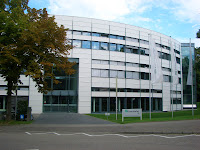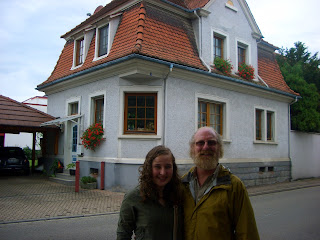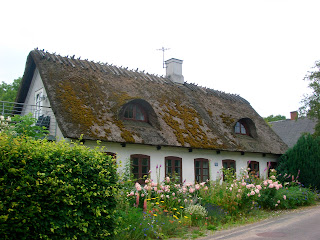Switzerland, August 28 - September 6:
The view over Lake Neuchatel and Switzerland's largest vegetable growing region

Enjoying a fine meal with the Bublozs in Neuchatel

Switzerland's veggie belt




Near Interlaken



Interlaken



Up the Brunig Pass

Lucerne

We hopped the train in Freiburg and made our way to Biel/Bienne in Switzerland. We had barely stopped to check out the local sign maps when a cyclist approached to help us out. He set us off in the right direction, and our route was then easy to follow via the excellent maps and signs along the way.
Our destination was our good family friends in Neuchatel, Eric and Madeleine Bubloz, and their visitors Sevgi and Laura. They welcomed us with open arms, refrigerators, and washing machines! Eric took us on a quick tour of the ancient chateau in Neuchatel, and we visited the local history museum on the waterfront to learn about the Celtic, Roman and later roots of the region. Our hosts took us to the new Celtic festival at the head of the lake, with music, reenactments, crafts, foods and fun for all - good thing we asked a fellow cyclist about all that activity on our way into town! The Bublozs treated us to traditional local fare, including a heated cheese and bread dish called 'raclette', which of course must be eaten accompanied by local wines. We enjoyed speaking French with them, since it is our best second language (and much better than our German). A hike down from the nearby Chaumont hill and viewpoint was a challenge, but we arrived at the restaurant back in town just before the rain.What a treat to have such great hosts, wonderful Swiss hospitality, and to feel "at home" for a few days!
The Bublozs were then off to France, and we set off to the Swiss capital Berne. Along the way, we passed through the large drained marshlands that are now Switzerland's largest region for growing some 40 types of vegetables (something like Holland Marsh in Ontario). Further on, Berne is nestled in a large bend in the Aare river, with its old downtown another World Heritage Site. We enjoyed an evening exploring the old town and the panoramic promenade with fantastic views off to the high alps. Our next day took us and our bikes through the downtown and then descended to river level, with the turquoise Aare swirling by at good speed. Unfortunately, we did not have time to stop and try out the local sport of walking upstream, jumping in, floating merrily downriver, and then grabbing a bar or rope for this purpose anchored in the bank and hauling oneself out (often to walk upstream to do it again)!
Our ride towards the prealps and mountains was lovely, through streamside fields with views of treed slopes and hilly terrain. All the while, we could see the high alps clear ahead of us, gradually getting closer. We followed the Aare upstream to Interlaken, lying between two scenic lakes backed by looming mountains and ringed by parks, restaurants and marinas for the tour and sail boats drifting about. A couple of stretches led us through quiet paths in evergreen forests, over a deep gorge (with see-through metal decking!), up a few steep stretches as the mountains squeezed up to the lake, and then into town. We stayed at a good sized campground with a prime view of the Eiger, Monch and Jungfrau mountains, lit up from morning light into evening moonlight. A quick bus and train ride up into the mountain valley led us into the mountain village of Grindelwald and we had a tremendous day of hiking with a perfectly clear day with which to soak up the views. The next day we ventured one valley over to Lauterbrunen, with spectacular rock walls on both sides of the valley, and then took the fenicular up to Wengen. The hike to Kleine Scheidig was fantastic with Jungfrau mountain, glaciers and waterfalls rising up ahead of us, and parasailers gliding over the peaks above to then circle gracefully down to the valley below. Unfortunately, we dropped our camera trying to take a picture of ourselves, so our trusty Casio was traded in for a waterproof version with a whopping 12 megapixels!
From Interlaken, we cycled along the lake, with the trail being increasingly hilly and steep along the shore, including spectacular waterfalls tumbling into the valley from cliffs above. This was our day to do the Brunig pass, a steep, winding climb of 500 metres on a quiet gravel road. The pass was tough, but Ian hung in there and pedalled the whole way up. Sue went a little slower to... take in the view... really... (and fix a flat)! The big frustration of the day was climbing an extra 200 metres or so to get to our campsite, which was then another 100 metres down. We knew that we would be starting the next day with a long climb. However, we didn't find much sympathy at the campsite. The other cyclists there (from Australia) were towing a 60 kg trailer with their 2 year old in it, mounds of groceries, and who knows what all. Being mountain bike racers, they didn't think the climb was too tough... but we did notice that the next day one of them took the bus with all their stuff and the child ... !
The descent down the Brunig pass was awesome. We lucked out with another sunny, clear day and the cycling was superb. Pedalling past mountain lakes, through small towns, rolling hills and right around Lake Lucerne to Lucerne itself was a great ride. We did some sites in Lucerne the next day and then headed off to Salzberg, Austria by train.
Before leaving our Switzerland post, we have to add that the cycling system and the signage for it was outstanding. Switzerland has 5 national trail systems, all efficiently laid out and signed: for bicycle touring, mountain biking, rollerblading, walking/hiking, and canoeing (the water here is so clear that you can read the signs on the bottom of the lakes - just kidding!). Even in the larger urban centres, we were thoughtfully signed the whole way through and the cycling facilities were reliable and great. Way to go, Switzerland! Even in Holland, we were sometimes 'dumped' with a lack of signage in the larger centres. What a treat was Switzerland cycling!




























